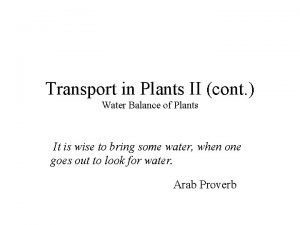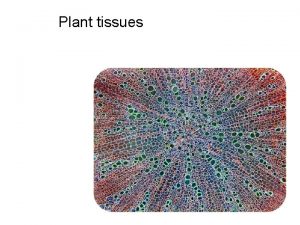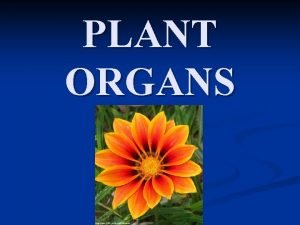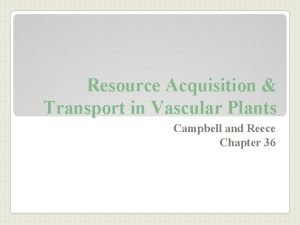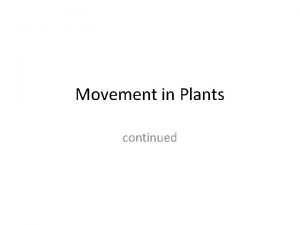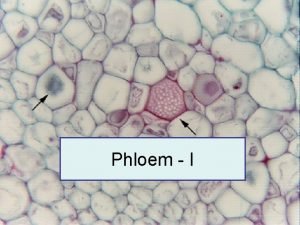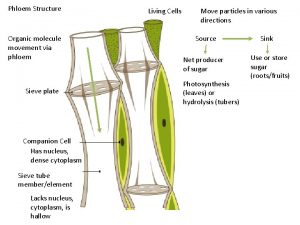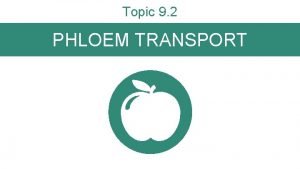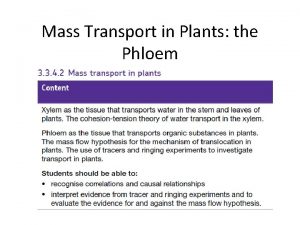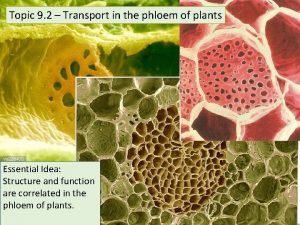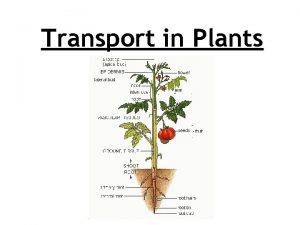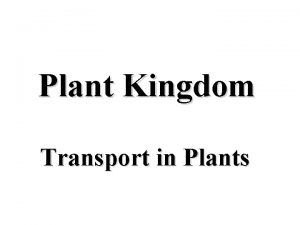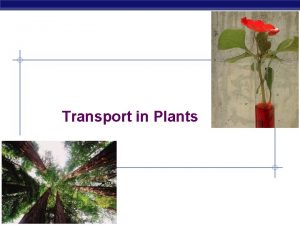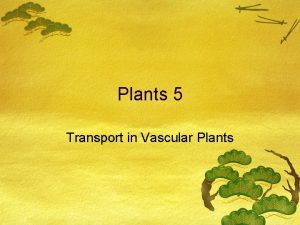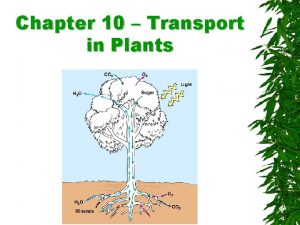TRANSPORT IN PHLOEM TOPIC 9 2 U Plants
















- Slides: 16

TRANSPORT IN PHLOEM TOPIC 9. 2

U: Plants transport organic compounds from sources to sinks • Phloem found in stems, roots, leaves • Composed of sieve tubes made up of living cells – Columns of sieve tube cells, separated by sieve plates (perforated walls) • Sieve tube cells associated with companion cells • Phloem transports organic compounds (sugar, a. a. ) • Translocation = transport of org comp • From source to sink – Source = where org comp loaded into phloem – Sink = where org comp unloaded, used

FROM SOURCE TO SINK!

Comparision of phloem & blood vessels PHLOEM BLOOD VESSELS • Transports substances in either direction • Transports blood in one direction • No valves or central pump • Valves (in veins) and central pump (heart) • Fluid flows inside tubes because of pressure gradients • Energy needed to generate pressure, so transport of sap is active • Fluid flows inside tubes because of pressure gradients • Energy needed to generate pressure, so transport of blood is active

Sources vs Sinks SOURCES • Photosynthetic tissues: – Mature green leaves – Green stems • Storage organs: – Germinating seeds – Tap roots or tubers at start of growth season SINKS • Roots that are growing or absorbing mineral ions using energy from cell respiration • Parts of plant growing or developing food stores: – Developing fruits – Developing seeds – Developing tab roots or tubers – Growing leaves

U: Active transport is used to load organic compounds into phloem sieve tubes at the • source Sap = sugars & minerals dissolved in H 2 O, transported by phloem • Sucrose is most prevalent solute in sap (good form of carb to transport since it’s not in a form plants use for respiration) • Phloem loading = bringing sugars INTO phloem

U: Incompressibility of water allows transport by hydrostatic pressure gradients • Sucrose build-up in companion cell draws water in • Build-up of pressure caused by: – Rigid cell walls – Incompressibility of water • Water flows from high to low pressure • At sink, sucrose withdrawn from phloem & either used as energy for growth or converted into starch • Loss of sucrose causes less pressure, so water that carried that solute to the sink is drawn back in to the transpiration stream in xylem

U: High concentrations of solutes in phloem at source lead to water uptake by osmosis

U: Raised hydrostatic pressure causes contents of phloem to flow toward sink

App: Structure-function relationship in phloem sieve tubes

Skill: Analysis of data from experiments measuring phloem transport rates using aphid stylets & radioactively labelled CO 2.

NOS: Developments in scientific research follow improvements in apparatus: experimental methods for measuring phloem transport rates using aphid stylets & radioactively-labelled CO 2 were only possible when radioisotopes became available • 14 C = radioactive isotope of C – Unstable; emits radiation as it decays • Radioactively-labeled C in CO 2 can be fixed during photosynthesis, releasing radiation • Both formation and movement of radioactive C can be traced • Geiger counters measure radiation levels in a crop

Skill: Identification of xylem & phloem in microscope images of stem & root



 Cell transport concept map
Cell transport concept map Meristematic tissue flow chart
Meristematic tissue flow chart Phloem in plants
Phloem in plants Topic down
Topic down Concluding sentence
Concluding sentence My favourite transport car
My favourite transport car Passive transport vs active transport venn diagram
Passive transport vs active transport venn diagram Bioflix activity membrane transport active transport
Bioflix activity membrane transport active transport Active vs passive transport venn diagram
Active vs passive transport venn diagram Active transport diagram
Active transport diagram Symport
Symport Pinocytosis vs phagocytosis
Pinocytosis vs phagocytosis Selectively permeable definition biology
Selectively permeable definition biology Primary active transport and secondary active transport
Primary active transport and secondary active transport Primary active transport vs secondary active transport
Primary active transport vs secondary active transport Resource acquisition and transport in vascular plants
Resource acquisition and transport in vascular plants Casparian strip
Casparian strip
